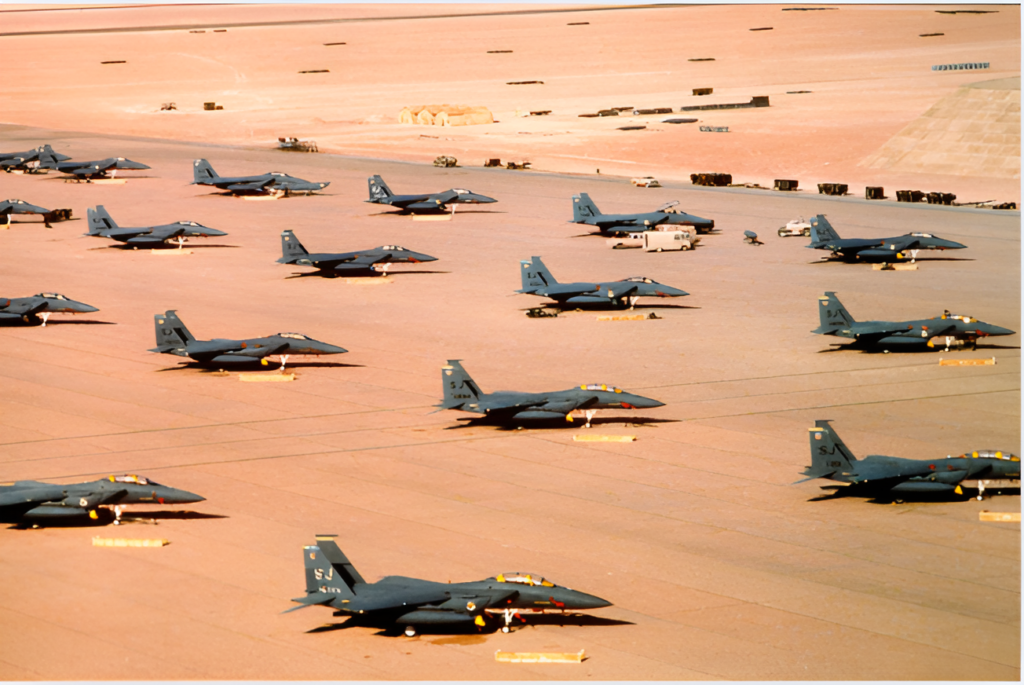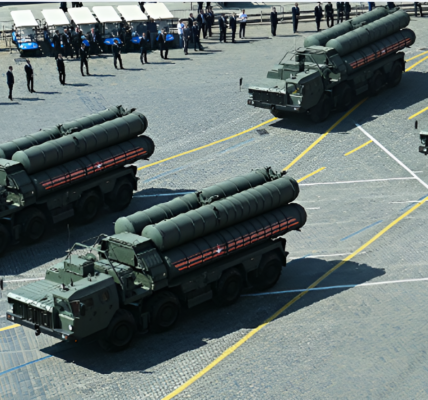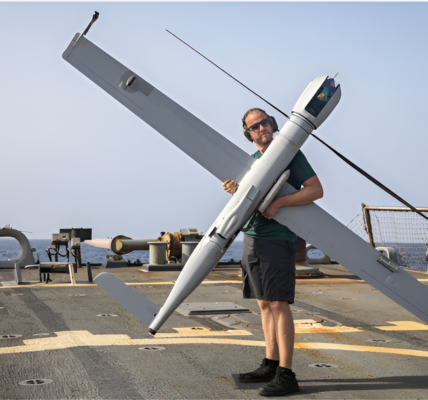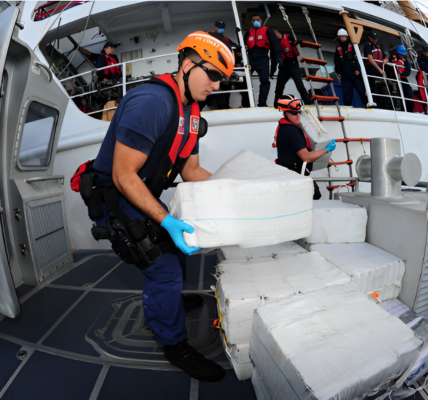
As we approach the 30th anniversary of Operation Desert Storm, discussions about airpower’s central role in the swift coalition victory are sure to be prominent. And rightfully so—airpower, particularly that of the U.S. Air Force, played a significant role in one of the most lopsided military victories in modern history. Over six weeks, coalition aircraft flew 112,000 combat missions, with U.S. Air Force personnel conducting nearly 60% of those. They scored all but three of the 35 aerial victories and dropped more than 90% of the coalition’s 7,400 tons of laser-guided bombs. When the ground campaign began, it lasted just 100 hours, with the coalition forces—outnumbered two-to-three by the Iraqis—suffering fewer than 300 casualties. This rapid and decisive ground advance, which covered 150 miles at a pace nearly double that of Nazi Germany’s famed blitzkrieg, further solidified the airpower narrative.
Much of the credit for the success of Desert Storm’s air campaign is given to Col. John Warden’s planning, particularly his “Instant Thunder” strategy, which aimed to cripple Iraq’s leadership, infrastructure, and military capabilities. Warden’s 1991 strategy was groundbreaking, drawing on ideas from his book The Air Campaign: Planning for Combat, and was based on the idea that attacking strategic centers of gravity—such as leadership and communication nodes—would disrupt the Iraqi government and military. While this vision undoubtedly influenced the war, it’s important to acknowledge that Warden’s plan was not the sole factor in the operation’s success.
In reality, the coalition’s victory hinged on more than just the strategic application of airpower. The most decisive impact came from the sustained pressure applied by coalition air forces on the Iraqi army. Two decades of interservice cooperation and shared innovation across U.S. military branches were equally crucial to achieving the coalition’s overwhelming success.
The Iraqi invasion of Kuwait in August 1990 did not catch the U.S. government entirely by surprise. Saddam Hussein had made his intentions known in the months leading up to the invasion. The U.S. response, led by General Norman Schwarzkopf at Central Command, initially focused on a defensive posture, encapsulated in Operation Desert Shield, while simultaneously exploring punitive airstrikes against Iraq.
Schwarzkopf, however, faced a challenge. The operational plans for Desert Shield did not contain any options for offensive airstrikes. As pressure mounted, Col. Warden and his team at Checkmate, the Air Force’s strategy directorate, presented the Instant Thunder plan, which emphasized strategic attacks on Iraq’s leadership and infrastructure. But U.S. Central Command’s air component commander, General Chuck Horner, wasn’t entirely convinced. In fact, Horner found the plan lacking, particularly in its failure to adequately address the most formidable threat: the Iraqi army. Instead of adopting Warden’s concept wholesale, Horner tapped Brigadier General Buster Glosson, Colonel David Deptula, and other Checkmate staff to refine the air campaign plan, leading to the formation of the “Black Hole” team.
This new air campaign would focus on eradicating the Iraqi air defense network, defeating the Iraqi air force, and most importantly, supporting the destruction of Iraqi military forces on the ground. The result was a campaign that emphasized not only the strategic attacks Warden had championed but also the tactical air support needed for a swift ground invasion.
Despite the early focus on attacking Iraq’s leadership and air defenses, the real success of airpower came through its decisive impact on the Iraqi army. On the first day of Desert Storm, coalition aircraft struck Iraqi military targets, and that attack continued with increasing intensity throughout the conflict. In total, air forces launched nearly 40% of all sorties against more than 27,000 Iraqi army targets. In particular, coalition airpower relentlessly targeted the Iraqi Republican Guard, a strategic-level target throughout the campaign, helping to ensure their destruction before the ground invasion even began.
By the time the ground forces surged into Iraq, airpower had already dealt a devastating blow to the Iraqi army. More than 90% of all strike sorties were aimed at Iraqi army units, clearing the path for the coalition to complete its mission in just 100 hours—one of the quickest and most decisive military operations in modern history.
In the years following Desert Storm, the role of airpower became the focal point of discussions on military strategy. Warden and others advocated for the primacy of strategic air campaigns in future wars, suggesting that airpower could be used alone to defeat an adversary by targeting its strategic centers. While this ideology remained influential, it did not fully capture the complex and integrated nature of the coalition’s success.
Gen. Merrill McPeak, Chief of Staff of the U.S. Air Force at the time, famously claimed that Desert Storm was the first time in history that a field army had been defeated by airpower alone. This oversimplified narrative obscured the essential interservice cooperation that made the victory possible. The U.S. military’s success in Desert Storm was not the result of airpower’s dominance in a vacuum. It was the culmination of more than a decade of doctrinal and technological collaboration between the U.S. Army and Air Force.
The strategic partnership between the two services began in the post-Vietnam era with the development of AirLand Battle and other concepts designed to ensure rapid and decisive military engagements. The decade before Desert Storm saw the implementation of joint acquisition initiatives, shared training programs, and new technologies like stealth aircraft, laser-guided bombs, and advanced armored vehicles. This cooperation led to an unmatched synergy on the battlefield during the Gulf War.
Looking back at Desert Storm, it’s clear that the victory was not simply the product of airpower or any single service’s ideology. The success of the operation lay in the ability of the U.S. military to collaborate, innovate, and combine the strengths of each service. This multi-service cooperation must remain a key lesson as the U.S. military shifts focus back to the challenge of peer adversaries like China and Russia.
In the years following Desert Storm, the U.S. military sometimes struggled with doctrinal and budgetary competition between the Army and Air Force, particularly during times of reduced defense spending. But the most valuable lesson from the Gulf War is the importance of interservice cooperation—how devastatingly effective the U.S. military can be when each branch works seamlessly together to achieve a unified goal.
As the U.S. military faces new challenges in an era of great power competition, Desert Storm serves as a model for what can be accomplished when all services—Army, Navy, Air Force, and Marines—coordinate effectively, bringing to bear their combined strengths on the battlefield.



